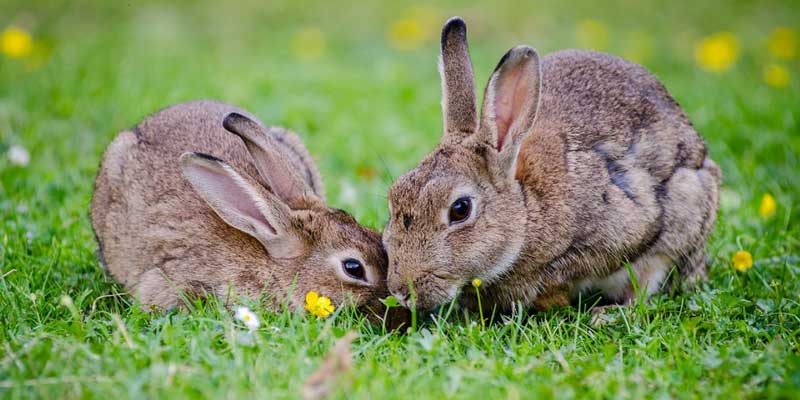Rabbit removal in Oakham: get rid of rabbits fast

We can help you get rid of rabbits
Despite the rabbits cute reputation as a much loved cartoon character in the form of Bugs Bunny or Peter Rabbit, they are also a major pest species in the UK. This mammal is largely underestimated by most but their capabilities to breed as well as chew, eat and dig through most landscapes is second to none.
For those whose property falls victim to the destruction caused by rabbits it poses problems in a variety of ways depending on the land use. The problems will only multiply if the rabbit population is left unregulated.
Farmland
Seven rabbits will eat as much as a sheep. With this in mind it doesn’t take much to understand how even a small population of rabbits can decimate a colossal amount of crop. It is estimated that rabbits cost the British agricultural industry £100 million a year through crop damage. Without doubt they are the number one pest species for farmers.
Burrowing rabbits also pose a threat to livestock and horses alike. Animals breaking legs in rabbit holes is not uncommon. Depending on the value of such livestock and the likely cost of vet fees to successfully repair the injury it is often the case that the animal is put to sleep.
Rabbits play havoc in such places and cause hundreds of thousands of pounds worth of damage to such industries each year. Ring barking (gnawing the whole way round the base of the tree) is the most common problem. If such a tree has its lower bark completely removed by rabbits – which is common in colder weather conditions the tree will die. If the rabbits only chew part of the way round the trunk, the tree will be able to retain a certain amount of nutrition however this often means disease and fungi can take hold.
The targeted trees also become weak and unstable. This problem obviously poses the threat of collapsing trees and potential accidents as well as the loss of earnings from trees dying. This can also have a negative effect on habitat management.
Tree guards can help to a degree but rabbits often chew through them in times of hardship. Rabbits are also capable of reaching heights of 50cm plus when stretched out on hind legs and capable of climbing if there is low foliage around. When rabbits attack fruit trees, the next harvest will be a ‘bumper’ crop as it is natures’ way of carrying on by producing extra seeds. This however is short-lived as the trees invariably die.
Gardens
Railways and motorways
Such areas normally consist of steep embankments covered in varying amounts of vegetation. This provides an ideal & potentially safe environment for rabbits, providing them with food, shelter and little predation. These areas often contain a high population or rabbits which then feed on adjacent land causing thousands of pounds worth of damage to crops etc.
Trees and plantations on embankments regularly become targeted and once ring barked by rabbits they die and can become unstable. The burrows they dig can also cause subsidence both of which, if unnoticed can cause serious accidents. In these areas rabbits need to be controlled for Health and Safety reasons.







